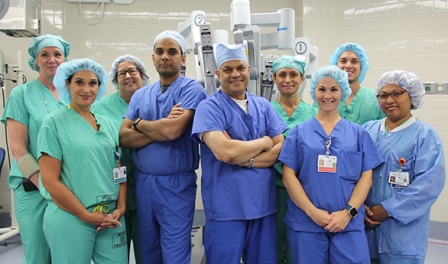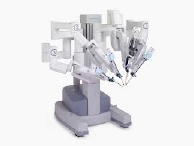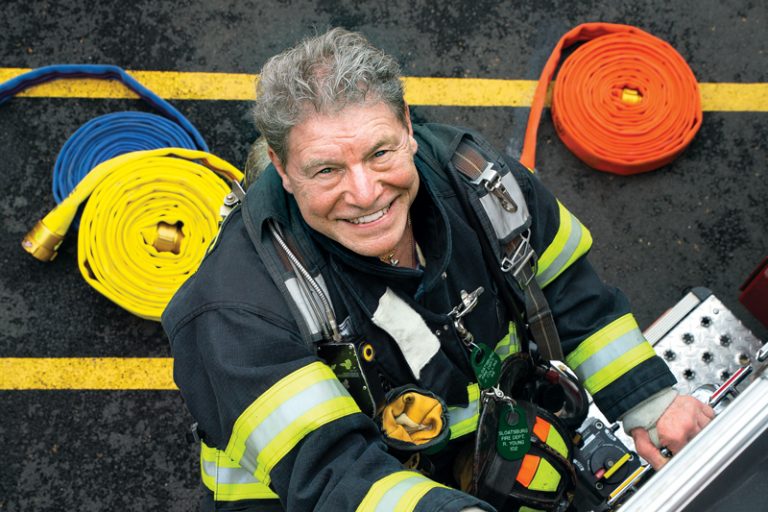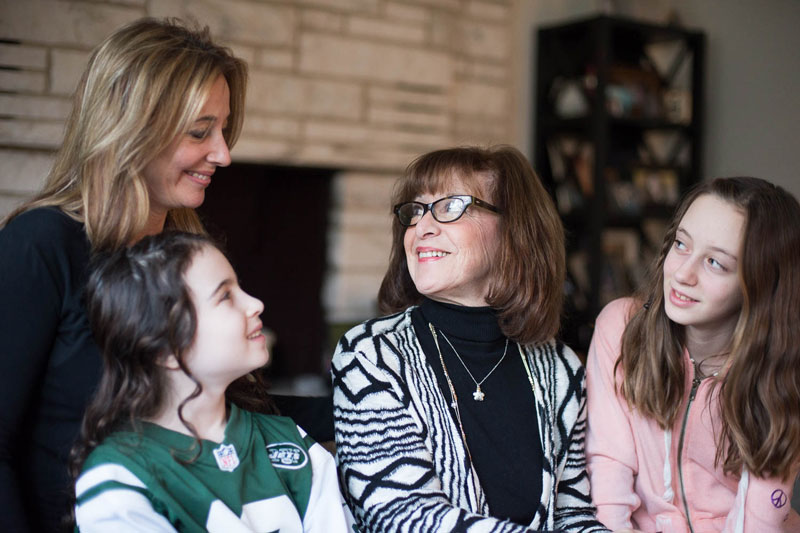
Please read Our Patient Information for more detail on scheduling elective outpatient ambulatory procedures and tests, visitation and what to expect in preparing for a surgical procedure.
Our center is comprised of the lower Hudson Valley’s leading Robotic Surgeons with expertise in Orthopaedic, Urologic, Gynecologic, Colorectal, Bariatric and Hernia surgery. The surgeons selected Registered Nurses, Physician Assistants, and Surgical Technicians to form the robotic surgery team. Together, the Good Samaritan Robotic Surgery team demonstrates excellence and pride in caring for our patients.
Robotic surgery is an option patients should explore when diagnosed with a condition requiring surgical intervention. If you, a relative, or a friend are looking for alternative options to the traditional scalpel, robotic surgery delivers improved outcomes and shorter recovery times.
Please continue to explore and learn more what The Good Samaritan Hospital Robotic Center can offer you.
What is Robotic Surgery?
It is a method to perform surgery using very small tools attached to a robotic arm. The surgeon controls the movements of the robot using a computerized console.
Traditional laparoscopy also uses tiny incisions, but the instruments are not attached to a robot. The addition of the robot to the surgical team allows the surgeon to manipulate tissue, suture material, and attached instruments beyond the natural ability of the human hand. This is a major reason why patients experience less pain and bleeding with robotic surgery.
da Vinci Robot Surgical System:

A county wide contest was held in 2017 for all sixth grade students to name our robot. The winning name chosen was Michelangelo. Our Robotic team has made Michelangelo a member of our family since 2012. The da Vinci Robot Surgical System is used for a variety of Urologic, Gynecologic, Colorectal, Bariatric and Hernia surgeries.
The Robotic Surgical System provides Good Samaritan Hospital surgeons with an alternative to both traditional open surgery and conventional laparoscopy, placing our surgeon's hands at the controls of a state-of-the-art robotic surgery platform. The Robotic System enables our surgeons to perform even the most complex and delicate procedures through very small incisions with unmatched precision.
Mako Robotic-Arm Assisted Technology
Mako Robotic-Arm Assisted Technology is used for joint replacement surgergy. It provides you with a personalized surgical plan based on your unique anatomy. First, a CT scan of the diseased hip or knee joint is taken. This CT scan is uploaded into the Mako System software, where a 3D model of your hip or knee is created. This 3D model is used to pre-plan and assist your surgeon in performing your joint replacement procedure.
In the operating room, your surgeon follows your personalized surgical plan while preparing the bone for the implant. The surgeon guides the robotic-arm within the pre-defined area and the Mako System helps the surgeon stay within the planned boundaries that were defined when the personalized pre-operative plan was created. In a laboratory study, Mako Total Knee Technology demonstrated accurate placement of implants to a personalized surgical plan. This study also showed that Mako Total Knee replacement demonstrated soft tissue protection to the ligaments around the knee. In patient and laboratory studies on Mako Total Hip and Partial Knee replacement, Mako Technology demonstrated accurate placement of implants to a personalized surgical plan.
Da Vinci and Mako Robotic Surgery Benefits:
- Significantly less pain
- Less blood loss
- Less scarring
- Shorter recovery time
- A faster return to normal daily activities
- And in many cases, better clinical outcomes
Tune In
March 31, 2022
Listen to “Health Matters” on WTBQ Radio with urologist Dr. Richard Evans, Administrative Director of Robotic Surgery at Bon Secours Charity Health System, a member of the Westchester Medical Center Health Network. He discusses robotic surgery, bloodless medicine, kidney conditions and men’s health issues.
See More Information About Our Robotic Surgery Specialties
Hear from Our Patients

Making an Iron Man With Robotic-Assisted Knee Replacement Surgery

This revolutionary procedure put firefighter and scuba rescue diver Robert Young back in action.
By Laurie Yarnell
Knee pain forced him to give up rowing. Next was bowling. But “the straw that broke the camel’s back,” says Robert Young of Sloatsburg, was severe pain after he moved some tree trunks around his property in a wheelbarrow.
Young, 65, leads an active life. His job as a condominium superintendent keeps him on the move all day, climbing ladders, fixing elevators and the like. For 38 years, he’s been a volunteer firefighter; for the last five, he’s served the department as a scuba rescue diver.
But Young’s knee pain was interfering with activities he loved. Despite his “very high tolerance for pain,” he knew he had to do something about his knees. In the fall of 2016, Young consulted orthopaedic surgeon Arup Bhadra, MD, Director of the Total Joint Replacement Center at Good Samaritan Hospital, a member of the Westchester Medical Center Health Network (WMCHealth). After an exam and X-rays, Dr. Bhadra diagnosed Young with osteoarthritis (OA) in both knees.
Experienced by about 27 million Americans, OA is the most common chronic condition of the joints. Unlike in normal joints, where cartilage is a cushion between bones, in OA, cartilage breaks down, resulting in pain, swelling and decreased mobility. While OA is most commonly seen in those over 65, obesity, overuse, previous injury and genetics are contributing factors.
Given the deterioration of Young’s knees, replacements were recommended. Because he was on the younger side, in excellent shape and has good bone density, less-invasive partial replacements were recommended, says Dr. Bhadra. “Because partial replacements avoid the cutting of ligaments and muscles, you have a smaller incision and faster recovery.”
Damaged tissue and bone are replaced with a prosthetic implant. “We take a very thin slice of arthritic bone from the knee, and we add in metal pieces of the same shape, with a little plastic spacer in between, which works like smooth cartilage,” says Dr. Bhadra. In September 2016, he performed this procedure on Young’s left knee. Young recovered quickly, returning to light-work duty after five weeks and to the fire department after two months.
Young was so pleased that he returned to The Total Joint Replacement Center to have a partial replacement on his right knee in October 2017. This time, Dr. Bhadra offered him a newer, more technically advanced procedure — MAKO robotic-arm-assisted surgery. The Center started offering robotic surgery earlier that year, and Good Samaritan Hospital is one of the only hospitals in the region with this capability. “By bringing this option to Good Samaritan Hospital, we’re staying ahead of the curve and offering our patients the very best care,” says Dr. Bhadra.
“We call it robotic, but it’s actually minimally invasive, computer-assisted surgery,” says Dr. Bhadra. “The surgeon remains totally in control.” A robotic CT scan of the joint, taken before surgery, gives a three-dimensional picture of the joint.
During robotic-assisted surgery, he adds, “Technology helps enable the surgeon to be 100 percent precise, working almost like a GPS signal.” Less soft-tissue invasion also may result in quicker recovery, adds Dr. Bhadra.
“My mobility came back twice as fast the second time around with the robotic surgery,” Young confirms. “I got off painkillers earlier and had an easier and faster recovery.”
Indeed, just three weeks after his second surgery, Young was dancing at a reunion party held for the hospital’s joint-replacement patients and medical staff.
“The hospital was excellent, and Dr. Bhadra was amazing and very clear in explaining what was going to happen,” says Young.
Today, Young is back to his active routine and feels “wonderful – I’m 99 percent better.” In fact, his ability to keep up with his 30-year-old buddies at the firehouse has earned him a new nickname: Iron Man.

Testimonial 2: Harriet Leitner
In Good Hands

Robotic surgery at Good Samaritan Hospital allowed this New City woman to go back to her life and the things she loves.
By Deborah Skolnik
Harriet Leitner of New City is retired, but few would describe her as retiring. When the 69-year-old isn’t babysitting her grandchildren or solving crossword puzzles, she she is likely to be taking a long, energetic walk. But late last winter, a persistent ache in her lower abdomen began taking the spring out of her step.
“The pain was always there,” Leitner, a former college professor, remembers. A gastroenterologist diagnosed her with diverticulitis, a digestive disease that causes inflammation of the colon. Her white-blood-cell count was high, as well, so she was admitted to Good Samaritan Hospital, a member of the Westchester Medical Center Health Network (WMCHealth), in Suffern. After a fourday stay, she improved enough to return home, but she still needed blood tests and colonoscopies to assess her condition.
The snow melted; flowers bloomed. But just as the weather became ideal for one of Leitner’s beloved strolls, the pain returned. In June of 2016, she found herself back at Good Samaritan. The news was bad: Her diverticulitis had intensified, and her white-blood-cell count was elevated again. In addition, a section of her colon had developed an abscess.
But there was good news, too: Good Samaritan’s Director of colorectal surgery, was standing by to help. He was determined to see his feisty new patient get her active life back. “We gave Harriet antibiotics and watched her for a little while, but she wasn’t getting any better,” says Good Samaritan surgeon. “We decided we would need to operate to remove the infected portion of her colon.” It was up to him to tell her.
While the idea of surgery can be unsettling, Leitner felt reassured from the moment the doctor walked into her hospital room.. “He exuded confidence, and he gave that to me,” she remembers. He told Leitner he would perform a minimally invasive procedure called a robotic colon resection on her. As the name suggests, the procedure involves using robotic arms, along with a tiny camera and instruments, to remove the diseased part of her colon. The Good Samaritan Hospital surgeons are the first and ONLY to perform this surgery in Rockland County. “I was also told that my healing time would be quicker, and I would have less pain. Sounded good to me!” Leitner says.
She remained in the hospital for nearly two weeks as the staff worked to stabilize her for surgery. “I knew everything about every nurse!” she laughs. Though she was physically uncomfortable, Leitner’s faith in her doctor kept her optimistic. “I kept on saying ‘This is going to pass,’” she recalls. Finally, in mid-June, Leitner’s white-blood-cell count had decreased enough for her to have the procedure.
In the operating room, her doctor made five small incisions in Leitner’s abdomen (“the biggest one was still only about three centimeters long,” he says). A tiny camera was inserted through one incision, allowing him to visualize the affected area of Leitner’s colon in great detail.
Next, controlling three robotic arms, the doctor inserted fine instruments inside Letiner’s abdomen. With precise maneuvers, he had them remove the diseased portion of Leitner’s colon, as well as her appendix. Within three hours, Leitner was out of surgery and on her way to recovery. Three days later, she left the hospital.
Leitner went to her daughter’s home for an additional 10 days to recover. “I felt good! No more abdominal pain,” Leitner recalls. Regular follow-up visits to Good Samaritan Hospital confirmed she was doing as well as she was feeling — her white-blood-cell count was back to normal, and she was healing nicely. At each subsequent checkup, Leitner says, “The doctors at Good Samaritan Hospital were always so kind and reassuring. They’d say, ‘You look great! You’re doing well!’”
It’s the kind of happy outcome the doctors at Good Samaritan Hospital see again and again: “We have done hundreds cases of robotic colon resection, and it’s really dramatically lowered patients’ length of stay at the hospital and gotten them back to their normal lives much quicker." Thirty years ago, the average length of stay for the first phase of a colon resection was 10 days.
Leitner is now back to enjoying hobbies and the company of her husband, Mike, their children, and grandchildren. Yet each time she sets out to enjoy one of her walks, she remembers how the Good Samaritan Hospital surgeron got her back on the road to good health. “I had hoped he would become my ‘miracle man,’ and he did. I would recommend Good Samaritan to anybody, without hesitation,” she says. “They took care of me, and they are really, really good.”